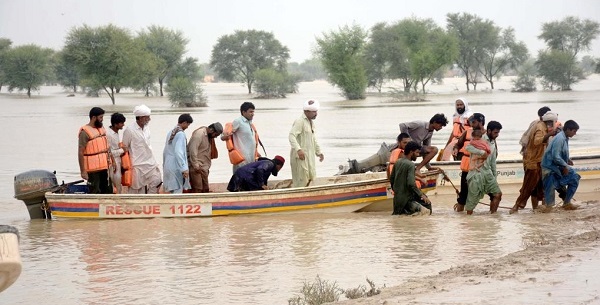
Islamabad, (Asian independent) Pakistan is going through the worst-ever floods, due to monsoon rains, with over 70 per cent of the country inundated, over 1,000 dead, ready crops spread across hundreds of thousands of acres destroyed, and at least 35 billion people, including women and children, displaced.
The floods have wreaked immense havoc in Gilgit-Baltistan, Khyber Pukhtunkhwa, and the south Punjab region while Balochistan and Sindh province are the worst-affected.
Among the worst-hit, Sindh is reeling under the deluge. However, with more flood water flowing towards it, the province is bracing for more destruction, and devastation, and even, catastrophe. More water from the swollen rivers in the north, reportedly having the strongest intensity and flow pressure, having knocked over cell phone towers, bridges, power lines and smashed through infrastructure for millions, is on its way, sending fear waves down the spines of already suffering locals and the struggling authorities.
Officials have estimated torrents of water could reach Sindh in the next few days, and warned millions, who are already receiving rescue and relief, of more destruction and devastation.
At the moment, as per officials, the Indus floodwaters are at high levels and expected to hit Sindh province in the coming days, leaving the fate of hundreds of thousands of people living along the 90-year-old barrage that diverts the flow of water from the river into the world’s largest irrigation systems, in the hands of ill-prepared infrastructure and weak hopes.
“Water is redirected by the barrage to a serious of canals totaling nearly 10,000 km that thread through farmlands, but years of neglect mean they are not capable of dealing with today’s record volumes,” local irrigation expert in Sukkur, Aziz Soomro, said.
“Water from the Indus is already lapping over its banks in several places, and unless the Sukkur barrage can control the flow, catastrophe will result,” he added.
The Flood Forecasting Division (FFD) has also issued a high-level flood warning in the Indus at Taunsa Barrage and Chashma Barrage, located in Punjab province.
Water levels in rivers and dams across the country have already reached their highest dangerous levels with Kabul River also witnessing a high flood.
It is in this view that FFD has already issued warning and directives for the inhabitants to evacuate the area and move to safer regions.
A similar warning has also been issued by Indus River System Authority (IRSA) in the Indus River at Taunsa and Sukkur Barrage.
“The inflow of water at Taunsa Barrage is 515,000 cusecs while at the Sukkur Barrage, it is 562,000 cusecs,” said an IRSA official.
The floods have also continued to claim lives as total number of deaths in the country have crossed 1,030 and the toll is consistently rising with every passing hour.







